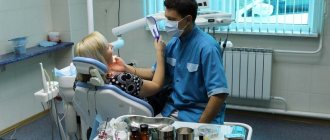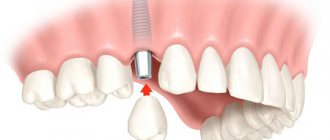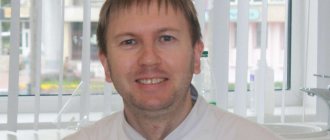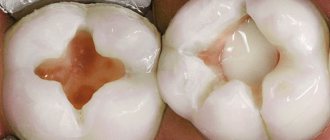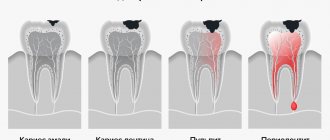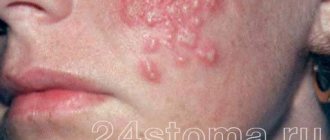We have all heard more than once in popular television programs about health that the human body is a single whole and when a problem appears in one of the organs, all the others suffer. Dentist patients are often convinced of this from their own experience. Experiencing pain, they turn to Moscow clinics for treatment of caries or periodontitis and are very surprised when the dentist does not find the cause of the pain and refers them for additional diagnostics or a consultation with a gnathologist.
Clinical gnathology
Gnathology refers to a dental field located at the intersection of dentistry and maxillofacial surgery. This dental discipline studies the subtle relationships of all organs and tissues of the dental system. Gnathology combines knowledge about:
- teeth;
- dentition;
- temporomandibular joint;
- condition of the masticatory muscles;
- biomechanics of chewing;
- periodontitis;
- the relationship between the proportions of the face and teeth.
In the absence of basic knowledge of gnathology, the doctor will not be able to competently and without serious “blunders” treat many dental pathologies - correct the bite, make a prosthesis, or carry out a surgical operation without complications.
For the correct and uninterrupted functioning of the temporomandibular joint, all chewing functions of the teeth and muscles responsible for the functioning of the lower jaw must be perfectly coordinated. Each link in the operation of the dental system is equally important, and the failure of one link of this system immediately disrupts the work of all other links.
Knowledge of gnathology is necessary even when filling teeth. In this case, the specialist restores the damaged area using materials that can give the desired shape to the tooth, taking into account the bite.
What causes TMJ dysfunction?
As the child grows, his dental system also develops—along with the other facial bones, the lower and upper jaw, fixedly connected to them, grow. A special feature of the lower jaw is the way it is attached to the cranial bones: it is suspended on them thanks to the masticatory muscles and two TMJs and can not only move, but also turn around.
This design ensures the correct connection of both jaws, the formation of a physiological orthognathic bite and the normal functioning of the dental system. Dentists of various specialties involved in the treatment and prosthetics of teeth in Moscow should try to maintain the relationship between the jaws. This is necessary for tight closure of the teeth, uniform tension of the masticatory muscles and normal functioning of the heads of the left and right TMJ.
Unfortunately, for a variety of reasons, permanent teeth deviate from their correct positions, disrupting the closure of the jaws. The reasons may be bad habits, regular stress that makes you clench your teeth, diseases and pathologies of internal organs, etc.
- To continue performing the vital function of chewing food, the body tries to correct the situation by taking advantage of the mobility of the lower jaw.
- To restore the impaired closure of the teeth, the jaw begins to shift, as a result of which the masticatory muscles on one side are stretched and on the other they are spasmed.
- This leads to displacement of the articular head of the TMJ and pinching of the nerves - the joint begins to click and hurt.
The need for gnathologists in Russia
Professor V.Yu. played a huge role in the development of gnathology in Russia. Kurlyandsky and his student - Professor Valentina Khvatova. The need to develop this area of dentistry did not arise by chance. It turned out that not all orthodontists can calculate in advance the closure of teeth after prosthetics.
Incorrect closure of teeth when chewing leads to uneven chewing load on them. At the same time, teeth quickly fail, and patients experience discomfort while chewing. Complications of such disorders in patients can include severe headaches, bruxism, and serious muscle disorders.
Often osteopaths, neurologists, psychotherapists and other specialists have to be involved in the treatment of dental disorders. At the same time, patients with headaches of unknown cause or bruxism sometimes have to be treated in neurological clinics or departments of maxillofacial surgery. That is why modern dentists need solid knowledge of gnathology and the ability to use simple devices (articulators, face bows, etc.). Many dentists, trying to meet the increased requirements for their specialty, receive postgraduate education or courses in the field of gnathology.
Nowadays, many large dental centers and clinics employ specialists who are knowledgeable in gnathology. This applies not only to Moscow clinics, but also to dental centers in St. Petersburg, Tver, Chelyabinsk, Yekaterinburg and other Russian cities.
PROTECTION OF PERSONAL INFORMATION
5.1. In accordance with the requirements of regulatory documents, the Organization has created a personal data protection system (PDS), consisting of subsystems of legal, organizational and technical protection.
5.2. The legal protection subsystem is a complex of legal, organizational, administrative and regulatory documents that ensure the creation, operation and improvement of the legal protection system.
5.3. The organizational protection subsystem includes the organization of the management structure of the CPPD, the permitting system, the protection of information when working with
employees, partners and third parties, protection of information in the open press, publishing and advertising activities, analytical work.
5.4. The technical protection subsystem includes a set of technical, software, software and hardware tools that ensure personal data protection.
5.5. The main PD protection measures used by the Organization are:
5.5.1. Appointment of a person responsible for the processing of personal data, who organizes the processing of personal data, training and instruction, internal control over compliance by the institution and its employees with the requirements for the protection of personal data;
5.5.2. Identification of current threats to the security of personal data when processing them in ISPD, and development of measures and measures to protect personal data;
5.5.3. Development of a policy regarding the processing of personal data;
5.5.4. Establishing rules for access to personal data processed in the ISPD, as well as ensuring registration and accounting of all actions performed with personal data in the ISPD;
5.5.5. Establishing individual passwords for employees to access the information system in accordance with their production responsibilities;
5.5.6. Application of information security means that have passed the compliance assessment procedure in accordance with the established procedure, accounting for computer storage media of personal data, ensuring their safety;
5.5.7. Certified anti-virus software with regularly updated databases;
5.5.8. Certified software for protecting information from unauthorized access;
5.5.9. Certified firewall and intrusion detection tool;
5.5.10. Compliance with conditions ensuring the safety of personal data and excluding unauthorized access to them, assessment of the effectiveness of measures taken and implemented to ensure the security of personal data
5.5.11. Establishing rules for access to processed personal data, ensuring registration and accounting of actions performed with personal data, as well as detecting facts of unauthorized access to personal data and taking measures;
5.5.12. Restoration of personal data modified or destroyed due to unauthorized access to them;
5.5.13. Training of the Organization's employees directly involved in the processing of personal data, the provisions of the legislation of the Russian Federation on personal data, including requirements for the protection of personal data, documents defining the Organization's policy regarding the processing of personal data, local acts on the processing of personal data;
5.5.14. Implementation of internal control and audit.
When to contact a gnathologist
If a patient has been treated by a dentist, but the pain in the teeth or jaw does not go away, it can be difficult to explain.
Any unaccounted for bump on a tooth or a prosthesis extending a few millimeters from the jaw can disrupt the normal movement of the jaw joint and lead to various unpleasant consequences.
Incorrect treatment can lead to various disturbances in the patient’s well-being:
- discomfort in the oral cavity;
- incomplete closure of the dentition;
- impaired jaw position;
- the appearance of dental anomalies.
You should not hope that all of the above violations will go away on their own. Quite the opposite: without finding out the cause and proper treatment, these symptoms will worsen and lead to chronic jaw pain or the risk of losing teeth.
By the way, there are symptoms that require early contact not just with a dentist, but with a gnathologist. Such symptoms can be expressed as:
- persistent muscle pain in the jaw, face, back of the head, neck or shoulder area;
- persistent headaches without an identified cause (usually in one half of the head);
- discomfort when closing teeth after treatment;
- regular tinnitus or tinnitus;
- clicking or crunching in the area of the jaw joints or ears;
- jamming of the jaw in a certain position when opening or closing the mouth;
- teeth grinding (bruxism).
Gnathology allows you to get a complete picture of the structure of the dental system of any person and find out everything about its features. This allows the specialist to understand the causes of any dental pathologies and guarantee successful treatment results.
However, there is no need to visit a gnathologist as regularly as a dentist. If the patient does not have any complaints, it is still important for him to get advice from this specialist before such important measures as prosthetics or installation of braces, so that the effect of treatment is maximum.
What do gnathologists do?
The human body is a complex system, all elements of which are interconnected. Any failures in one structure most often provoke violations in others. Understanding the subtleties of the relationship between the components of the dentofacial apparatus and the musculoskeletal skeleton, a gnathologist can quickly determine the causes of failures and restore dental harmony. He analyzes all existing health problems at the level of cause and effect in order to offer the most optimal ways to treat pathologies.
What does a gnathologist determine?
A person is often forced to consult a gnathologist due to various health disorders. Situations that a gnathologist dentist can help deal with most often relate to:
- Problems with the mandibular joint (displacement or dysfunction).
- The need to determine the basic gnathological parameters (determining the correct relationship of the jaws and their deviation from the central occlusion, determining the interalveolar height or the distance between the alveolar ridges of the upper and lower jaw).
- If it is necessary to restore the correct movements of the lower dentition in various directions (right, left, up and down) and recreate the correct canine and incisal separation.
- To recreate the anatomical features of the chewing surfaces of teeth for effective and gentle chewing in a number of pathologies (increased tooth wear, bruxism).
- If necessary, muscle relaxation therapy and the use of disconnecting mouthguards (“bite glasses”) or splints (splints or plates for fixation). This is due to patient complaints of contraction of the muscles (masticatory or facial) or jaw while eating or yawning.
Most of the above problems or pathologies can only be identified and eliminated by a gnathologist.
About diagnostic difficulties in the work of a gnathologist
A gnathologist must understand a variety of health problems, since 85% of malocclusions are associated with pathologies in the body that are not related to dental problems. Such pathologies may include disorders associated with:
- violations of various sizes of the jaw apparatus or deviations in the location of the jaws relative to the base of the skull;
- pathologies of the mandibular joints or masticatory muscles;
- problems with the spine;
- pathological changes in the neck and shoulder muscles (which are very difficult to identify).
The course of such pathologies is especially aggravated by the presence of disorders in the patient associated with osteopathic, hormonal, neurological and psychological disorders.
Many patients do not realize that diseases of the TMJ (temporomandibular joints) and masticatory muscles can occur due to disorders in the skeletal muscles, spine or large joints of the body. Especially often, such disorders can occur with combined pathologies of the cervical spine and associated disorders in the TMJ, in the muscles (facial, chewing, trapezius) or in disturbed alignment of the dentition.
If such points are not taken into account, orthodontic treatment will be unsatisfactory. Thus, straightening teeth can lead to complications such as:
- loosening or dislocation of teeth;
- pain when chewing;
- increased tooth sensitivity;
- dysfunction of the jaw joints;
- exposure of tooth roots;
- lack of chewing (occlusal) contact of the upper and lower teeth.
Therefore, for the effective installation of dentures or braces, a mandatory interdisciplinary approach must be taken into account, which is mastered by gnathologists.
How can you understand that pain and spasms in the jaw area are associated specifically with the TMJ?
Most often, with disorders of the TMJ, people go to the dentist with complaints of toothache. And only an experienced dentist can determine that this patient needs to undergo a full examination by a gnathologist.
When diagnosing disorders in the functioning of the TMJ and the dental system as a whole, a number of devices are used that evaluate the functioning of the muscles and joints, determine exactly how the teeth close, and help relieve spasms. The patient must be examined using all of the above equipment in order to identify and eliminate the cause of anomalies that have arisen in this area.
What therapeutic measures does a gnathologist use?
In order to correct various dental disorders, a gnathologist can use methods related to:
- Carrying out functional diagnostic methods (radiography, axiography, photo recording), which allows us to determine the nuances of the individual structure of the entire articular apparatus of the jaws and build a treatment plan.
- The modeling stage, at which the future bite is designed, taking into account the location of each individual tooth and the entire jaw as a whole. In this case, orthodontic treatment with SAP technologies can be used (dental restoration using the most precise methods of 3D technologies).
- Prosthetics using functional modeling methods.
- Treatment using stabilizer splints to eliminate discomfort and restore the correct position of the jaw.
Thanks to a gnathologist, you can solve many health problems related to:
- restoration of the proper functioning of the articular apparatus of the upper and lower jaw;
- relief from pain in the jaw, face, head or neck of unknown origin;
- correction of bite pathologies or consequences of injuries to the maxillofacial area;
- improvement of general well-being due to the restoration of hearing and vision in case of neurological problems after incorrect dental treatment.
Another way a gnathologist can correct improper muscle function is myogymnastics. This program includes exercises to stimulate the formation of a correct bite, its correction and to prevent complications after orthodontic treatment. Therapeutic exercises are selected individually for each patient by the specialist himself.
PROCESSING OF PERSONAL DATA
4.1. Receiving PD
4.1.1. All PD should be obtained from the subject himself. If the subject's personal data can only be obtained from a third party, then the subject must be notified about this or consent must be obtained from him.
4.1.2. The operator must inform the subject about the purposes, intended sources and methods of obtaining PD, the nature of the PD to be received, the list of actions with PD, the period during which the consent is valid and the procedure for its revocation, as well as the consequences of the subject’s refusal to give written consent to receive them.
4.1.3. Documents containing personal data are created by:
a) copying original documents (passport, education document, TIN certificate, pension certificate, etc.);
b) entering information into accounting forms;
c) obtaining originals of the necessary documents (work book, medical report, characteristics, etc.).
The procedure for access of a PD subject to his PD processed by the Organization is determined in accordance with the law and is determined by the internal regulatory documents of the Organization.
4.2. PD processing
4.2.1. Processing of personal data is carried out:
- with the consent of the subject of personal data to the processing of his personal data;
- in cases where the processing of personal data is necessary for the implementation and fulfillment of the functions, powers and responsibilities assigned by the legislation of the Russian Federation;
- in cases where the processing of personal data is carried out, access to an unlimited number of persons is provided by the subject of personal data or at his request (hereinafter referred to as personal data made publicly available by the subject of personal data).
Employees' access to processed PD is carried out in accordance with their job responsibilities and the requirements of the Organization's internal regulatory documents.
Employees admitted to PD processing, upon signature, familiarize themselves with the organization’s documents establishing the procedure for PD processing, including documents establishing the rights and obligations of specific Employees.
The organization eliminates identified violations of the legislation on the processing and protection of personal data.
4.2.2 Purposes of PD processing:
- ensuring the Organization of providing medical care to the population, as well as the most complete fulfillment of obligations and competencies in accordance with Federal Laws of November 21, 2011 No. 323-FZ “On the fundamentals of protecting the health of citizens of the Russian Federation”, dated April 12, 2010 No. 61-FZ “On circulation of medicines" and dated November 29, 2010 No. 326-FZ "On compulsory medical insurance of citizens in the Russian Federation", Rules for the provision of paid medical services by the Limited Liability Company "Celladent" (LLC "Celladent"), approved by the Decree of the Government of the Russian Federation dated October 4, 2012 No. 1006;
- implementation of labor relations;
- implementation of civil law relations.
4.2.3. Categories of personal data subjects
The Organization processes personal data of the following subjects:
- individuals who are in labor relations with the institution;
- individuals who are close relatives of employees of the institution;
- individuals who have left the institution;
- individuals who are job candidates;
- individuals who are in civil legal relations with the institution;
- individuals who applied to the establishment of Selladent LLC for medical assistance.
4.2.4. PD processed by the Organization:
- data obtained during the implementation of labor relations;
- data obtained for the selection of candidates for work in the organization;
- data obtained during the implementation of civil law relations;
- data obtained during the provision of medical care to Celladent LLC.
The full list of personal data is presented in the List of personal data approved by the General Director of the Organization.
4.2.5. Personal data is processed:
- using automation tools.
- without the use of automation tools.
4.3. PD storage
4.3.1. Subjects' personal data can be received, undergo further processing and transferred for storage both on paper and in electronic form.
4.3.2. PD recorded on paper is stored in locked cabinets or in locked rooms with limited access rights (registry).
4.3.3. Personal data of subjects processed using automation tools for different purposes are stored in different folders (tabs).
4.3.4. It is not allowed to store and place documents containing personal data in open electronic catalogs (file sharing services) in ISPD.
4.3.5. PD is stored in a form that makes it possible to identify the PD subject for no longer than required by the purposes of their processing, and they are subject to destruction upon achievement of the purposes of processing or in the event of the loss of the need to achieve them.
4.4. Destruction of PD
4.4.1. The destruction of documents (media) containing personal data is carried out by burning, crushing (grinding), chemical decomposition, transformation into a shapeless mass or powder. A shredder can be used to destroy paper documents.
4.4.2. PD on electronic media is destroyed by erasing or formatting the media.
4.4.3. Destruction is carried out by a commission. The fact of destruction of personal data is documented by an act of destruction of media, signed by members of the commission.
4.5. Transfer of personal data
4.5.1. The organization transfers PD to third parties in the following cases:
- the subject has expressed his consent to such actions;
- the transfer is provided for by Russian or other applicable legislation within the framework of the procedure established by law.
4.5.2. List of persons to whom PD is transferred
Third parties to whom PD is transferred:
- Pension Fund of the Russian Federation for accounting (legally);
- Tax authorities of the Russian Federation (legally);
- Social Insurance Fund (legally);
- Territorial Compulsory Medical Insurance Fund (legally);
- medical insurance organizations for compulsory and voluntary medical insurance (legally);
- banks for payroll (based on agreement);
- judicial and law enforcement agencies in cases established by law;
- credit history bureau (with the consent of the subject);
- law firms operating within the framework of the legislation of the Russian Federation, in case of failure to fulfill obligations under a loan agreement (with the consent of the subject).
What to expect from a consultation with a gnathologist
A gnathologist identifies the individual structural features of each patient’s jaw system. To do this, the specialist conducts a complex of functional diagnostics, radiography, makes a diagnosis and draws up a treatment plan.
First, the dentist-gnathologist conducts a functional study with diagnostic and treatment preparation, and then correlates all the results obtained with the individual anatomical parameters of the patient.
During treatment, a gnathologist can use various devices. The individual parameters of the patient’s dental system are measured using devices – an articulator and a facebow. An articulator is a device for reproducing the movements of the lower jaw, taking into account its individual characteristics. Dental technicians in laboratories always use articulators in their work, which are adjusted according to the individual parameters of the patient. To record the individual positions of the lower jaw in relation to the upper jaw and to transmit individual parameters of jaw movement, another gnathologist’s device is used - the face bow.
The facial bow and articulator make it possible to record and reproduce the individual characteristics of mandibular movements. This measurement technique allows you to make prosthetics as correctly as possible.
As a result, the prostheses become ideally comfortable for the patient and require minimal time to get used to.
After such a professional approach to prosthetics, the load on the teeth is distributed as evenly as possible, which increases the service life of any implants, dentures and the reliability of restoration processes.
To restore the jaws, eliminate discomfort and correct incorrect jaw position, splint therapy is used. Mouthguards or trainers to normalize muscle functions are often prescribed to the patient at the preliminary stage or after installation of a prosthesis. These devices help make the orthodontic treatment process more comfortable and effective.
Children especially often need treatment from a gnathologist.
Muscle dysfunction in childhood disrupts the development of the dental system, and therefore requires the use of complex treatment to expand the jaws (often using braces). That is why a gnathologist can promptly identify problems with muscle tone in a child, restore them and prevent future curvatures.
What techniques do you use to eliminate TMJ dysfunction?
In addition to special equipment, mouth guards and trainers help relieve tension and restore muscle function. That is why specialists prescribe them to patients before or after the installation of orthopedic structures. In addition, trainers and mouthguards also allow you to optimize and shorten the process of orthodontic treatment, especially when it comes to children. Previously, it was believed that a child with a narrow jaw could not avoid crowded teeth. Modern experts have refuted this statement and proved that jaws can “adjust” to any size of teeth, provided that nothing interferes with their growth. However, improper functioning of the muscles can stop the development of the jaws, and they will have to be expanded with the help of braces or complex treatment. A gnathologist helps you tone your muscles in a timely manner and avoid the appearance of serious curvatures. And this applies not only to children, but also to adults, with the only difference being that for the latter, the process of achieving the desired result will take a little longer.
Another way to restore proper muscle function is myogymnastics, a special program that stimulates the formation of a correct bite and its correction, preventing relapses after orthodontic treatment. The specialist will prescribe which exercises you will perform.
Prices
It is impossible to calculate in advance the cost of a gnathologist’s work. It all depends on the pathology that he reveals during the examination. The approximate cost of treatment by a gnathologist, associated with the restoration of normal functioning of the dental system, ranges from 10,000 rubles. It will cost more for a specialist to treat TMJ dysfunction, which is important for effective and competent prosthetics.
A specialist gnathologist is able to improve the results of any type of orthodontic treatment. This is possible by obtaining a complete picture of the patient’s teeth and jaws, which is important for giving the dentures maximum anatomical and functional identity of the “native” teeth.
Sources used:
- “Removable dentures: a textbook” (Mironova M.L.)
- International Academy of Gnathology
- “Orthopedic dentistry. Textbook" (Abolmasov N.G.)
How is an appointment with a doctor?
An appointment with a gnathologist is not much different from an appointment with other specialists. First of all, the doctor asks the patient in detail about his complaints and finds out the history of the disease. Particular attention is paid to the presence of other chronic diseases in the patient. Since dysfunction of the dental system is closely related to the nervous system, the presence of injuries, and dental diseases, the doctor dwells on these aspects in more detail.
It is mandatory to examine the oral cavity and evaluate the condition of the facial part of the skull and spine. To make an accurate diagnosis, the specialist prescribes additional instrumental and laboratory research methods that will help carry out differential diagnosis and identify the main cause of the patient’s complaints.
Sometimes it may take some time to make a final diagnosis, and the patient will not limit himself to one visit to the gnathologist. However, the use of modern technologies greatly simplifies the diagnostic process. After the cause of the disorders has been found, the doctor selects a set of the most effective treatment measures for the patient.
